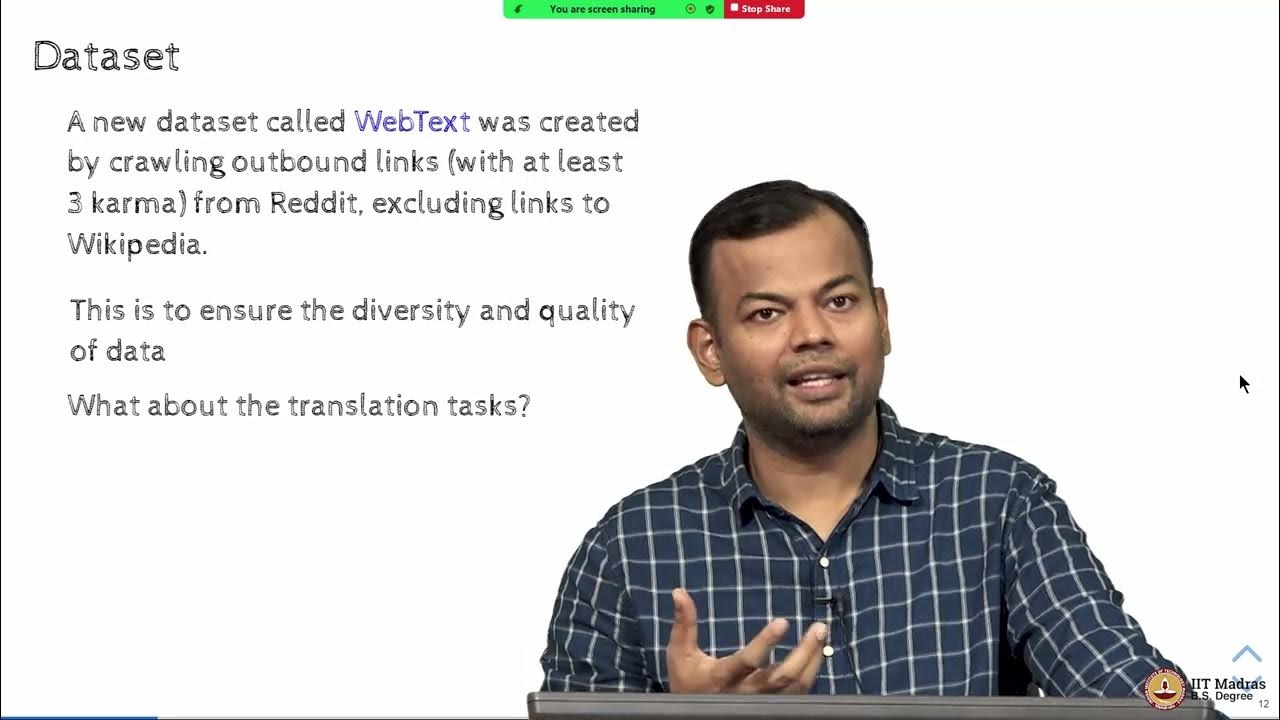2024's Biggest Breakthroughs in Computer Science
Summary
TLDRThis script explores the rapid advancements in large language models like GPT-4, particularly focusing on their emergence of new skills through scaling laws and the concept of compositional generalization. It delves into how these models, trained on vast amounts of data, can combine previously unseen skills and generate novel outputs. The research suggests that large language models are moving beyond mere pattern repetition, demonstrating true creativity. The discussion also touches on the development of algorithms for understanding complex quantum systems, showcasing the intersection of machine learning and quantum mechanics in solving challenging problems.
Takeaways
- 😀 Large language models, like GPT-4, have rapidly evolved, demonstrating unexpected abilities, but the question remains whether they truly understand language or are just mimicking their training data.
- 😀 Emergence in AI models occurs when larger models show sudden improvements, indicating the development of new skills, though the underlying reasons for this phenomenon are still not well understood.
- 😀 Researchers from Princeton and Google DeepMind argue that large language models like GPT-4 develop compositional generalization, which allows them to combine multiple language skills to create more complex outputs.
- 😀 The concept of 'stochastic parrots' in AI suggests that models may only be echoing training data, but compositional generalization implies models can create novel combinations from learned pieces of knowledge.
- 😀 A mathematical model based on random graphs helped researchers understand how large language models combine various skills and generalize to new compositions of skills.
- 😀 The Skill Mix test developed by the researchers demonstrates that larger models, such as GPT-4, can combine multiple skills to generate coherent and creative responses, like using spatial reasoning, bias, and metaphor in a sewing task.
- 😀 Smaller language models struggle to combine even two skills, while medium models can combine up to three, and the largest models can combine up to six skills effectively.
- 😀 The mathematical framework suggests that compositionality in large models leads to sudden emergent abilities, allowing them to handle novel tasks and combinations of skills they haven't explicitly seen during training.
- 😀 Quantum systems, which are extremely complex, require efficient algorithms to compute Hamiltonians that describe interactions between particles. This remains a challenging problem due to quantum entanglement.
- 😀 A breakthrough from MIT and UC Berkeley led to the development of a polynomial optimization-based algorithm that can compute Hamiltonians for low-temperature quantum systems, potentially revolutionizing quantum computing.
- 😀 By using a technique called sum of squares relaxation, the researchers were able to simplify difficult quantum problems, proving that efficient learning algorithms for quantum systems are possible.
Q & A
What is the main focus of the research mentioned in the script regarding large language models?
-The research focuses on understanding the capabilities of large language models, specifically how they develop new skills through a phenomenon called 'emergence,' and how they can generalize and combine different language skills.
What is the concept of 'emergence' in the context of large language models?
-Emergence refers to the sudden increase in performance of large language models as they scale up, producing new behaviors that are not directly explained by their training data, hinting at the development of novel abilities.
How do researchers test whether large language models can combine multiple skills?
-Researchers designed the 'Skill Mix' test, where models are given a list of skills and a topic, and they must generate text that combines those skills. For example, GPT-4 was tasked with writing about sewing using spatial reasoning, self-serving bias, and metaphor.
What does the Skill Mix test reveal about large language models like GPT-4?
-The Skill Mix test demonstrates that as large language models scale up, they become increasingly capable of combining multiple skills, such as GPT-4 being able to combine five or six skills in a single piece of text.
Why do researchers argue that large language models like GPT-4 have developed compositional generalization?
-Researchers argue that GPT-4's ability to combine a large number of skills, even those it hasn't explicitly seen in training data, indicates compositional generalization—a meta-skill that allows the model to creatively combine learned abilities.
What is the main challenge in evaluating language models based on their training data?
-The main challenge is that researchers do not have access to the exact training data of the models, making it difficult to know whether a model has seen the specific test data before and whether its performance is truly reflective of generalizable skills.
What is the significance of random graph theory in the researchers' model?
-Random graph theory provides a mathematical framework for understanding how large language models might develop emergent behaviors. In this context, the nodes represent language skills and chunks of text, and the edges represent the connections between them that allow for skill combination.
What is the role of scaling laws in understanding the performance of large language models?
-Scaling laws describe the relationship between model size, training data, and performance. They suggest that as models scale, they become better at combining skills and generalizing to new tasks, leading to the phenomenon of emergent behaviors.
What are the implications of the research for the future of quantum computing?
-The research on Hamiltonian learning and the use of polynomial optimization methods could have significant implications for quantum computing, especially in understanding and simulating quantum systems, which are essential for advancements in quantum technologies like superconductivity and superfluidity.
How did the MIT and UC Berkeley team approach the problem of Hamiltonian learning in quantum systems?
-The MIT and UC Berkeley team used polynomial optimization, a tool from classical machine learning, to approximate measurements of quantum systems. They then applied the 'sum of squares' method to relax the constraints of polynomial systems, ultimately leading to an efficient Hamiltonian learning algorithm for low-temperature quantum systems.
Outlines

Dieser Bereich ist nur für Premium-Benutzer verfügbar. Bitte führen Sie ein Upgrade durch, um auf diesen Abschnitt zuzugreifen.
Upgrade durchführenMindmap

Dieser Bereich ist nur für Premium-Benutzer verfügbar. Bitte führen Sie ein Upgrade durch, um auf diesen Abschnitt zuzugreifen.
Upgrade durchführenKeywords

Dieser Bereich ist nur für Premium-Benutzer verfügbar. Bitte führen Sie ein Upgrade durch, um auf diesen Abschnitt zuzugreifen.
Upgrade durchführenHighlights

Dieser Bereich ist nur für Premium-Benutzer verfügbar. Bitte führen Sie ein Upgrade durch, um auf diesen Abschnitt zuzugreifen.
Upgrade durchführenTranscripts

Dieser Bereich ist nur für Premium-Benutzer verfügbar. Bitte führen Sie ein Upgrade durch, um auf diesen Abschnitt zuzugreifen.
Upgrade durchführenWeitere ähnliche Videos ansehen

Intelligence Artificielle: la fin du bullshit ? (AI News)

GPT-2:Prompting the models

AI can't cross this line and we don't know why.

So Google's Research Just Exposed OpenAI's Secrets (OpenAI o1-Exposed)

AI Has a Fatal Flaw—And Nobody Can Fix It

L'inesplicabile utilità di Claude Sonnet, a prescindere da ciò che dicono i benchmark
5.0 / 5 (0 votes)
